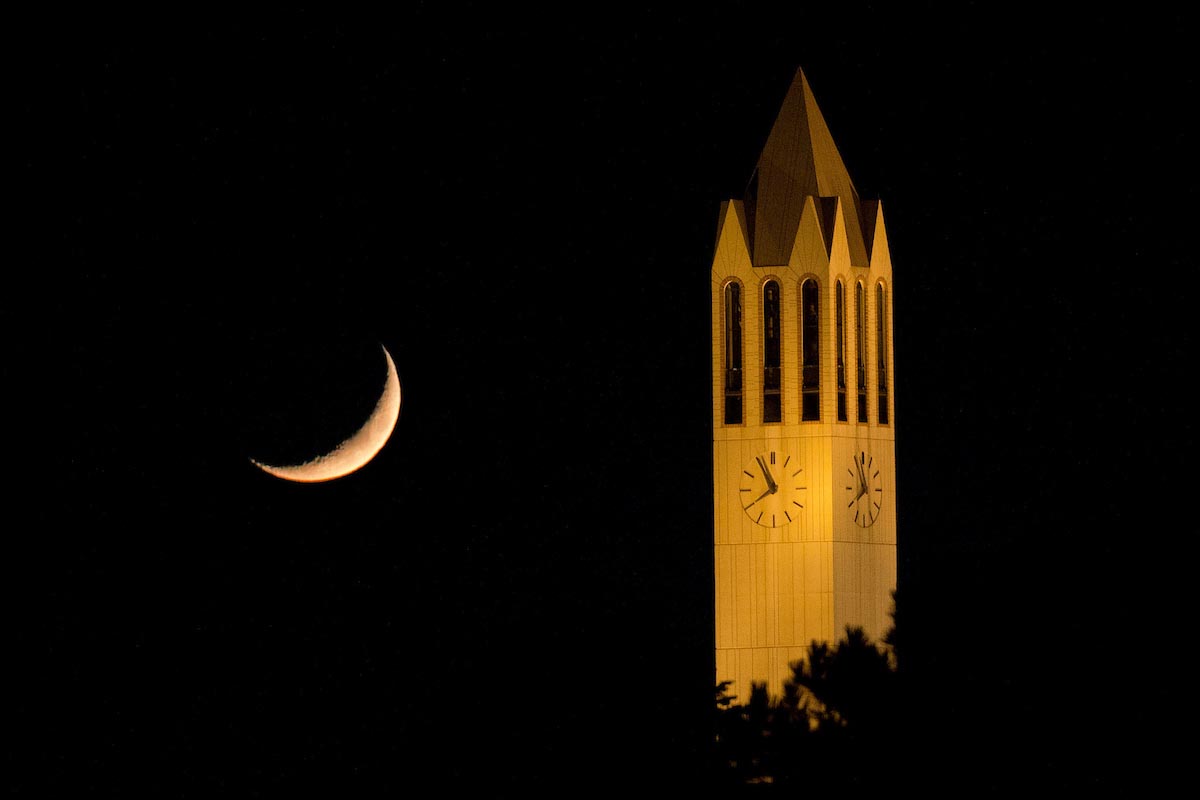UNO Researchers Explore Future of Space Travel
With the Artemis mission, NASA is once again hoping to send astronauts to the moon. However, not much has changed since Apollo 11 first landed in 1969. This is why Kyle Finley and Dave Pares have been testing new options for interstellar travel with the goal of reducing cost, risk, and impact on the environment.
- published: 2022/11/15
- contact: Office of Strategic Marketing and Communications
- email: contact@unomaha.edu

The eyes of the nation have been on NASA’s Artemis I, a shuttle designed largely utilizing 1960s-era technology with the goal to put a human, once-again, on the moon.
The shuttle had multiple failed launches following pre-launch issues including a liquid hydrogen leak before finally launching before dawn on Nov. 16.
Managing risks has become a major issue for NASA in the wake of incidents like Columbia, Challenger, and Apollo. UNO instructors Dave Pares, from the Department of Geography and Geology, and Kyle Finley, from School of Interdisciplinary Informatics, believe the costs – in terms of materials and personnel – can largely be avoided by rethinking how we approach space travel by moving from fuel to electromagnetic power.
“The current approach used for shuttles, space-based telescopes, the International Space Station, satellites, and launches use chemical propellants,” Pares said. “Nearly 90 percent of the weight of the rocket is propellant – the rest is payload.”
Much like the in the same way the world is rethinking its energy consumption due to cost, as well as impact on the environment, Pares and Finley have been exploring options that, until recently, have been only seen as science fiction.
“According to Einstein’s Theory of General Relativity, matter and energy can bend spacetime,” Pares said. “If we could induce artificially-generated electromagnetic fields that overlap at certain angles to cause that compression, a craft using that energy could be pushed forward in terrestrial and space environments.”
This concept, known as a “warp bubble” supposes that, much like a conveyer belt physically moves stationary objects forward by carrying them along a path where the space in front of the object ‘vanishes’ and more space appears behind the object.
“By compressing the fabric of space in front of the craft you create a warp bubble around the craft and in the back of the bubble it expands, which allows the bubble to move through spacetime,” Pares said.
While warp drives and warp speed have been largely theoretical and depicted in stories out of Star Trek and Star Wars, Pares and Finley have conducted research showing that the concept is measurable, albeit on a small scale, with what they call the VEM (Variable Electro Magnetic Drive). Similarly, late last year, a Defense Advanced Research Projects Agency (DARPA) scientist accidentally discovered a microscopic, but measurable warp bubble.
With finite natural resources and the massive amounts of it needed to create the proper amount of fuel needed to launch a rocket into space, Pares and Finley said it only makes sense that scientists begin truly investing in experiments that can potentially prove the theoretical to be applicable. Also, in applying Einstein’ theory, time and space would be able to move faster outside a space-bound craft than inside if it were encased in a warp bubble.
“The potential economic gains for a space-faring nation are staggering,” Pares said. “However, you need efficient means to get from point A to point B. Right now, it takes 10.5 months to get to Mars. A VEM Drive could get us to Mars in 18 days.”
Pares said that there is still a big hill to climb in considering alternative energy sources for space travel. Much like other major transformations, change is often resisted because of perceived risks involved; however, he said, existing practices have shown risk as well.
“Using technology that creates warp fields is definitely a paradigm shift in our thinking and practice of using chemical or solid fuel-propelled vehicles in space. As more engineers, scientists, and businesses get educated on the benefits and utilizations of warp technology, they will eventually use and advance it for operational use in space.”
Science fiction first gave us the idea of traveling to the moon more than a century ago, but it took until 1969 for it to become a reality. Now, more than 50 years since, it seems like only a matter of time before, once again, science fiction becomes science fact.
About the University of Nebraska at Omaha
Located in one of America’s best cities to live, work and learn, the University of Nebraska at Omaha (UNO) is Nebraska’s premier metropolitan university. With more than 15,000 students enrolled in 200-plus programs of study, UNO is recognized nationally for its online education, graduate education, military friendliness and community engagement efforts. Founded in 1908, UNO has served learners of all backgrounds for more than 100 years and is dedicated to another century of excellence both in the classroom and in the community.
Follow UNO on Facebook, Twitter (X), Instagram, LinkedIn, and YouTube.